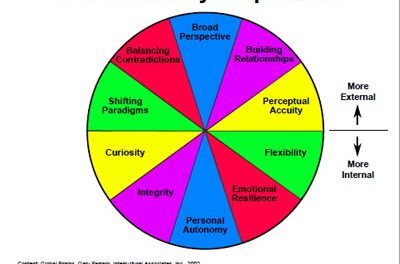Twitter is one of those unique environments that defies simple categorization: kind of like a blog, or a telegram, or instant messaging, or a wire service, but somehow distinct, deceptively simple, and surprisingly protean, in the sense of shaping a wild frontier of information within the flow (and steadily accumulated log) of 140-character messages. Its genuine power –like that of virtually all social media tools–lies in the way in which it simply, directly, and yes, personally conveys the distinctive personality, resourcefulness and relationships you and your company or organization represent.
So how do you capture all that richness in 140 characters, and when? Relatively few of your constituents care about what coffee shop you’re supporting today, so you can safely and virtually always ignore the “What are you doing?” question at the top of your Twitter profile page.
The secret (in contrast with The Secret!) is to make the most of content you already have and developing the habit of tweeting information you would otherwise share through other means anyway, as well as leveraging the power of application linkages and scheduling to maintain your presence in the Twitterverse even when you don’t have any time. So here are 13 ideas for using Twitter to fit the time you have available.
Some combination of these activities can fit into as little as five minutes a week or up to 15 minutes a day, depending on your specific intentions and objectives. All will contribute to the creation of a progressively richer online Twitter profile of who you or your organization are and what you do, while steadily expanding the sphere of others who share your concerns, interests and passions and therefore represent potential partners or customers.
- Set up software (I like Hootsuite) to automatically announce via Twitter a new entry on your Web site or blog (once set up, zero effort is required while still broadening contact with multiple constituencies)
- Create and schedule the release of a series of insights or observations on a common theme or campaign (again, I like Hootsuite for this function–15 minutes of prep work, up to weeks of maintaining a “current” online presence)
- Share Web site resources, professional blog entries, or references related to your field of business or interest (again, use Hootsuite to track how many people check out the links you share)
- Forward to your network (that is, retweet or RT) useful information you’ve come upon in other tweets (strengthens relationships and shares the wealth)
- Provide answers to questions asked by others (use reply, or @TwitterName the person you’re helping out)
- Personally thank or encourage a colleague or friend (through direct message, or DM or replying)
- Celebrate every victory, accomplishment, milestone (a victory ain’t a victory until you’ve told someone!)
- Share a spontaneous insight, breakthrough or learning as it happens (a quick stake in the ground for future reference)
- Recommend a valuable resource or contact for others to follow (learn about the popular #followfriday tradition in which people share groups of their favorite “friends”)
- Request advice or recommendations
- “Live tweet” an event or conference (beyond the immediate resource for those who can’t physically attend, you create a record of the meeting on your Twitter profile page for accountability and followthrough)
- Release a special offer or discount (use frugally!)
- Contribute to or start an ongoing repository of information, resources or insights on a specific topic by inserting appropriate hashtags into your tweets (e.g., search for #publicrelations on search.twitter.com)



